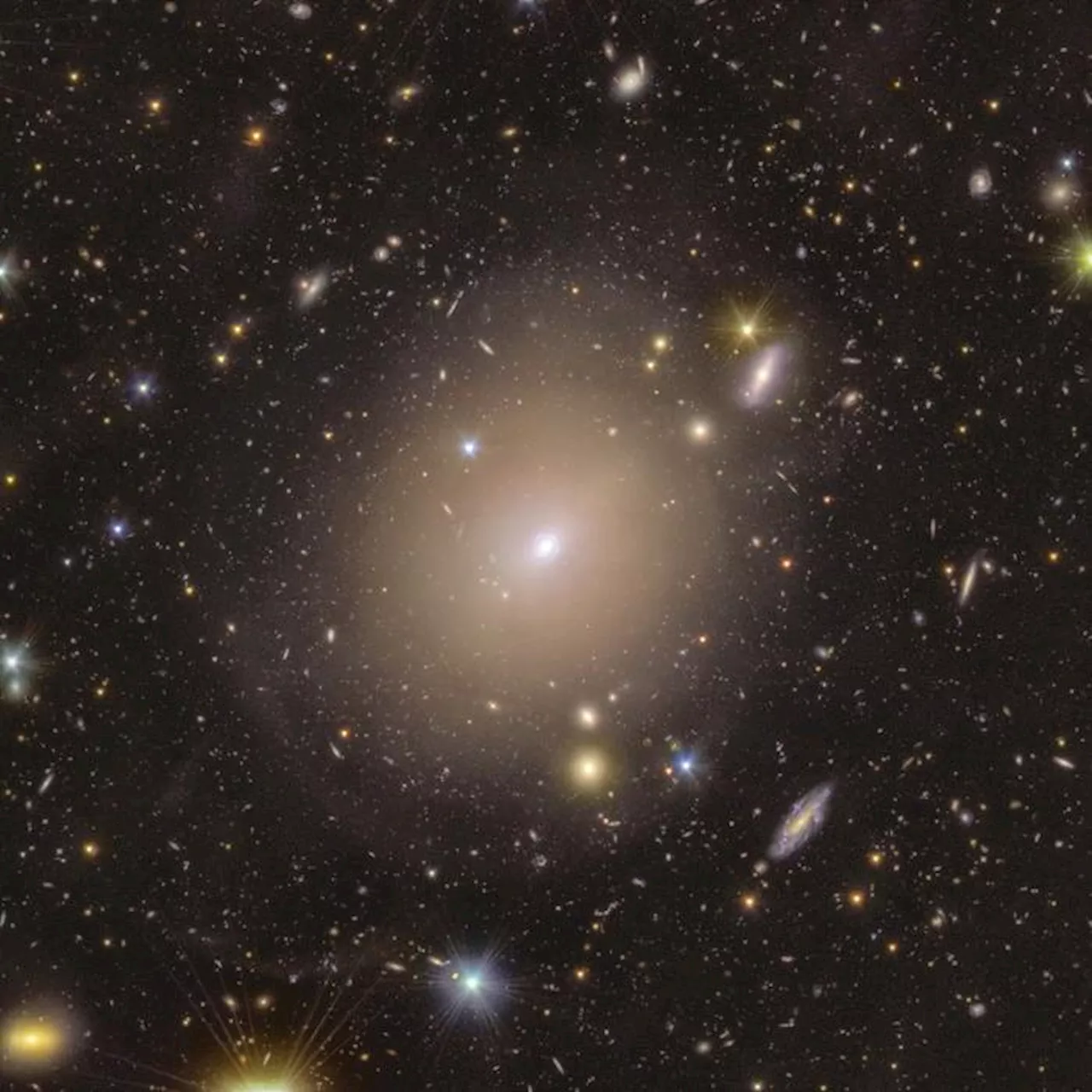The European Space Agency's Euclid telescope has captured an unexpected and remarkable image of an Einstein ring. This phenomenon, predicted by Einstein's theory of relativity, occurs when the gravity of a foreground galaxy bends and magnifies the light from a background galaxy, creating a ring-like structure. The image showcases the ring surrounding the nucleus of the galaxy NGC 6505, with colourful foreground stars and background galaxies adding to the spectacle.
The Euclid space telescope brings the Einstein Ring into view. Check out the accidental discovery and what it looks like through the lens.The ring of light surrounding the centre of the galaxy NGC 6505 , captured by ESA’s Euclid telescope, is a stunning example of an Einstein ring. NGC 6505 is acting as a gravitational lens, bending light from a galaxy far behind it.
The siting was also unusual because in space distance, it is relatively close to Earth. The galaxy it encircles is around 590 million light-years from Earth. The background galaxy from which the light emanates, at 4.42 billion light years, is much farther away. That galaxy, unlike the much-observed NGC 6505 has never been investigated and was unnamed at the time of its discovery. Astronomers first detected NGC 6505 in 1884. The fact that Euclid saw the ring around a heavily studied galaxy, but emanating from a much farther unknown one makes the finding that much more special. It also validates the power of Euclid’s instruments.
“The galaxy has been known to astronomers for a very long time,” Valeria Pettorino, ESA Euclid Project Scientist, said in a press release. “And yet this ring was never observed before. This demonstrates how powerful Euclid is, finding new things even in places we thought we knew well.” Euclid’s mission is to explore the effects of gravity throughout the Universe. It is tasked with observing billions of galaxies out to 10 billion light-years. Astronomers expect to observe many more examples of gravitational lensing during Euclid’s mission. Finding such a spectacular one early in the space telescope’s journey is an encouraging sign that Euclid will find many more fantastic phenomena.
EINSTEIN RING GRAVITATIONAL LENSING EUCLID TELESCOPE NGC 6505 SPACE TELESCOPE
United States Latest News, United States Headlines
Similar News:You can also read news stories similar to this one that we have collected from other news sources.
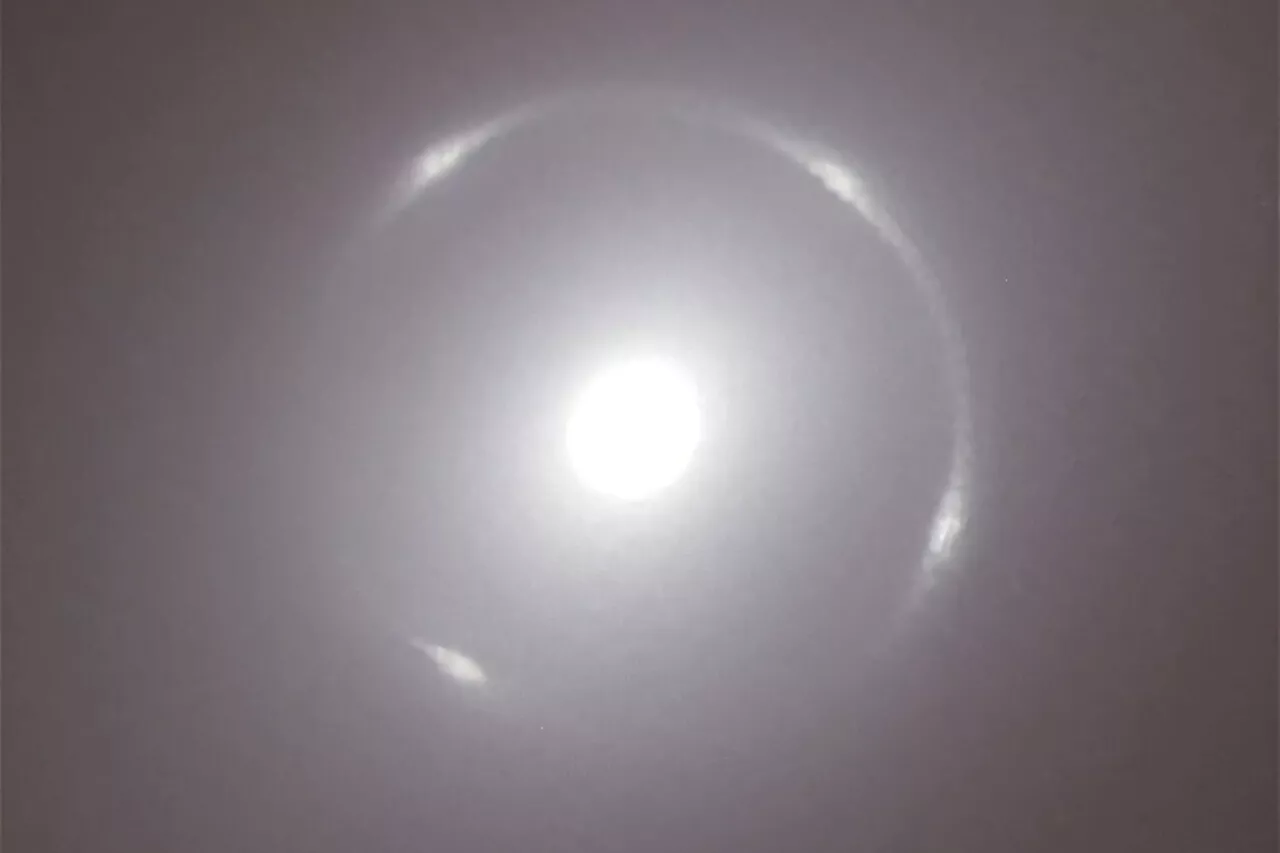 Euclid Telescope Captures Stunning Einstein Ring in Early Test ImageThe Euclid Space Telescope has captured a breathtaking image of an Einstein Ring - a rare phenomenon where light from a distant galaxy is bent into a perfect circle by the gravity of a foreground galaxy. This image, taken just 24 hours after the telescope's initial observations, demonstrates Euclid's impressive capabilities and promises exciting discoveries in the future.
Euclid Telescope Captures Stunning Einstein Ring in Early Test ImageThe Euclid Space Telescope has captured a breathtaking image of an Einstein Ring - a rare phenomenon where light from a distant galaxy is bent into a perfect circle by the gravity of a foreground galaxy. This image, taken just 24 hours after the telescope's initial observations, demonstrates Euclid's impressive capabilities and promises exciting discoveries in the future.
Read more »
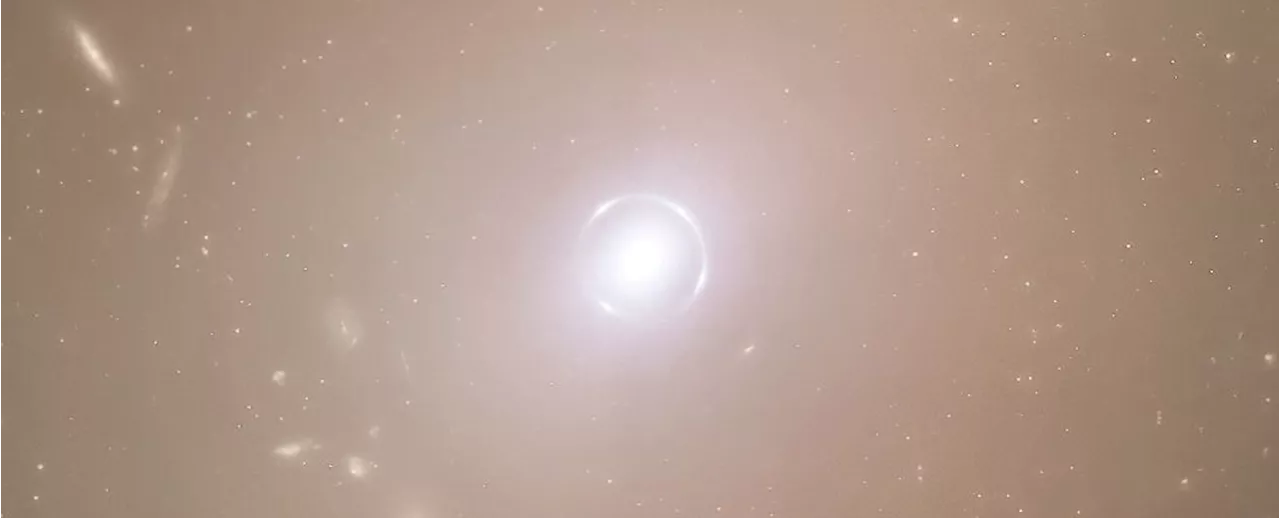 Rare Einstein Ring Discovered Around Galaxy by Euclid TelescopeAstronomers using the Euclid space telescope have observed a perfect ring of light, known as an Einstein ring, surrounding a galaxy named NGC 6505. This rare phenomenon occurs when the gravity of a massive object, like NGC 6505, bends the light from a more distant galaxy, creating a ring-like structure. The discovery offers scientists a unique opportunity to study the distant galaxy in greater detail.
Rare Einstein Ring Discovered Around Galaxy by Euclid TelescopeAstronomers using the Euclid space telescope have observed a perfect ring of light, known as an Einstein ring, surrounding a galaxy named NGC 6505. This rare phenomenon occurs when the gravity of a massive object, like NGC 6505, bends the light from a more distant galaxy, creating a ring-like structure. The discovery offers scientists a unique opportunity to study the distant galaxy in greater detail.
Read more »
 Euclid Telescope Discovers Stunning Einstein Ring in Nearby GalaxyThe Euclid space telescope, launched in 2023 to explore the dark Universe, has captured an incredibly detailed image of an Einstein Ring. This rare phenomenon, predicted by Albert Einstein's theory of relativity, occurs when the gravity of a foreground galaxy bends the light from a background galaxy, creating a ring of light. The discovery, made during Euclid's early testing phase, highlights the telescope's remarkable capabilities and its potential to uncover many more hidden secrets about the Universe.
Euclid Telescope Discovers Stunning Einstein Ring in Nearby GalaxyThe Euclid space telescope, launched in 2023 to explore the dark Universe, has captured an incredibly detailed image of an Einstein Ring. This rare phenomenon, predicted by Albert Einstein's theory of relativity, occurs when the gravity of a foreground galaxy bends the light from a background galaxy, creating a ring of light. The discovery, made during Euclid's early testing phase, highlights the telescope's remarkable capabilities and its potential to uncover many more hidden secrets about the Universe.
Read more »
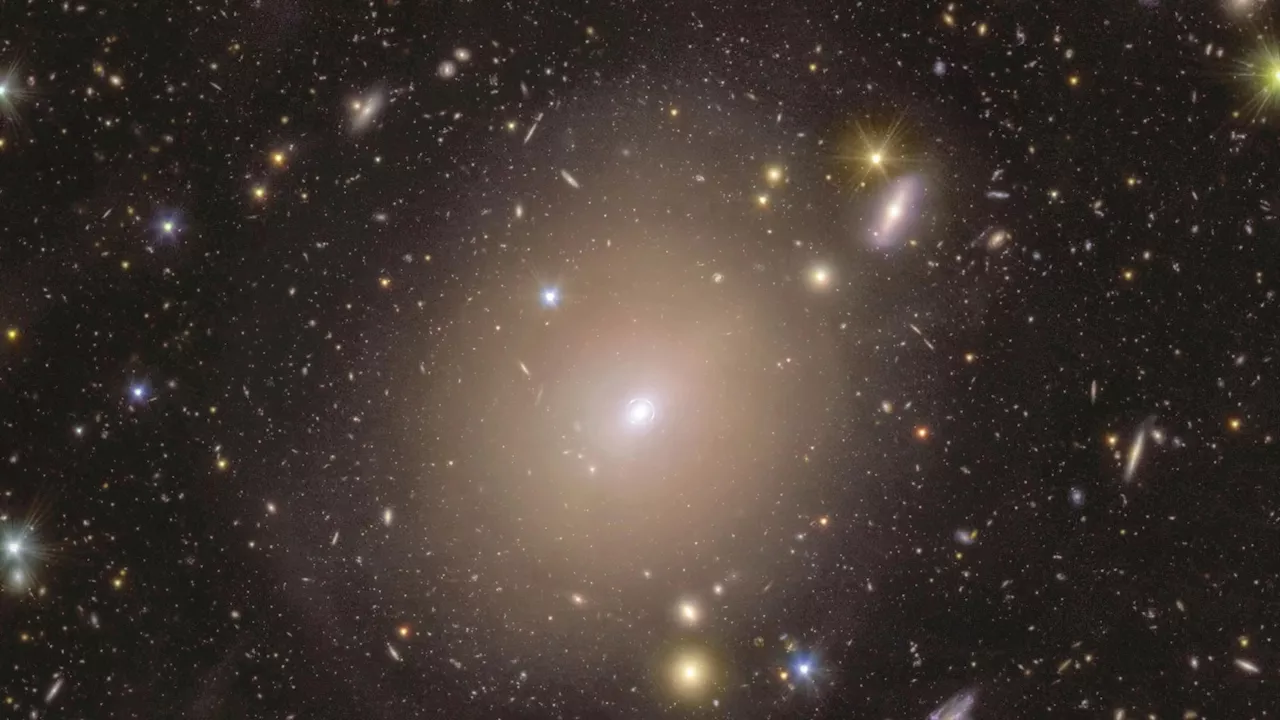 Einstein Ring Spotted Surrounding Distant Galaxy by Euclid TelescopeThe European Space Agency's Euclid telescope has captured an image of an Einstein ring - a bright halo of light surrounding a galaxy 590 million light-years away. This rare phenomenon occurs when the gravity of a closer galaxy distorts the light from a much more distant galaxy, creating a ring-like effect. The discovery, reported in the journal Astronomy and Astrophysics, provides valuable insights into dark energy and dark matter.
Einstein Ring Spotted Surrounding Distant Galaxy by Euclid TelescopeThe European Space Agency's Euclid telescope has captured an image of an Einstein ring - a bright halo of light surrounding a galaxy 590 million light-years away. This rare phenomenon occurs when the gravity of a closer galaxy distorts the light from a much more distant galaxy, creating a ring-like effect. The discovery, reported in the journal Astronomy and Astrophysics, provides valuable insights into dark energy and dark matter.
Read more »
 Euclid Telescope Spots Rare 'Einstein Ring' Around Nearby GalaxyThe European Space Agency's Euclid space telescope has made a remarkable discovery, detecting a rare 'Einstein ring'—a luminous halo surrounding a distant galaxy—providing valuable insights into the nature of gravity and the universe. This finding, published in the journal Astronomy and Astrophysics, showcases the telescope's capabilities and its mission to unravel the mysteries of dark energy and dark matter.
Euclid Telescope Spots Rare 'Einstein Ring' Around Nearby GalaxyThe European Space Agency's Euclid space telescope has made a remarkable discovery, detecting a rare 'Einstein ring'—a luminous halo surrounding a distant galaxy—providing valuable insights into the nature of gravity and the universe. This finding, published in the journal Astronomy and Astrophysics, showcases the telescope's capabilities and its mission to unravel the mysteries of dark energy and dark matter.
Read more »
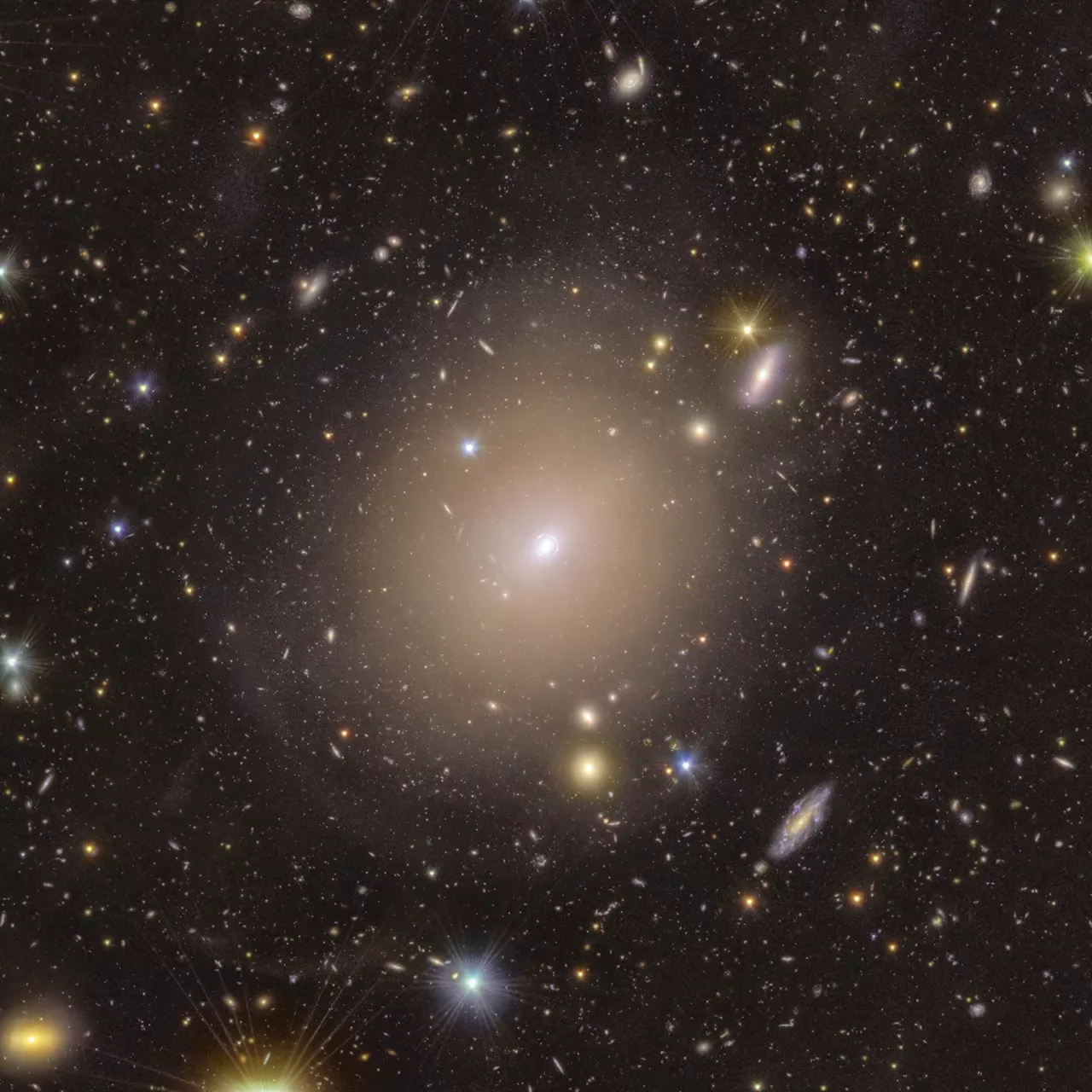 Euclid Discovers Einstein Ring in Our Cosmic BackyardEuclid, an ESA (European Space Agency) mission with NASA contributions, has made a surprising discovery in our cosmic backyard: a phenomenon called an
Euclid Discovers Einstein Ring in Our Cosmic BackyardEuclid, an ESA (European Space Agency) mission with NASA contributions, has made a surprising discovery in our cosmic backyard: a phenomenon called an
Read more »
